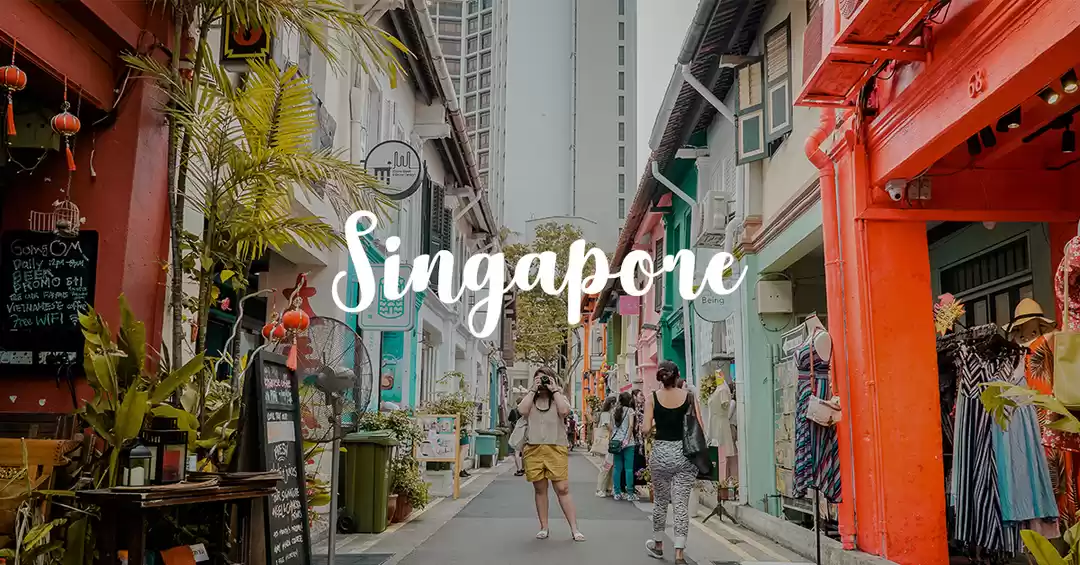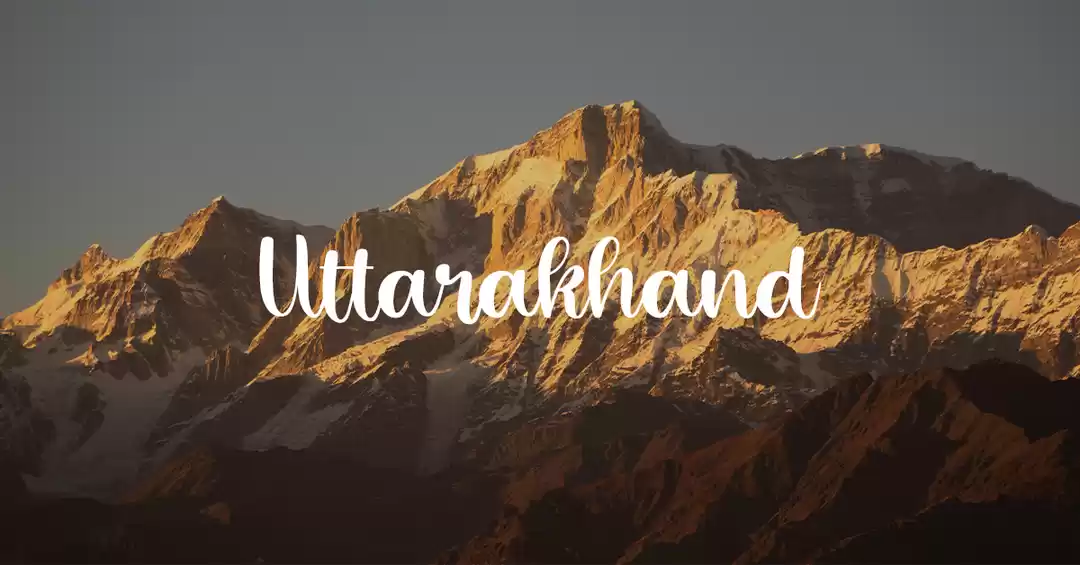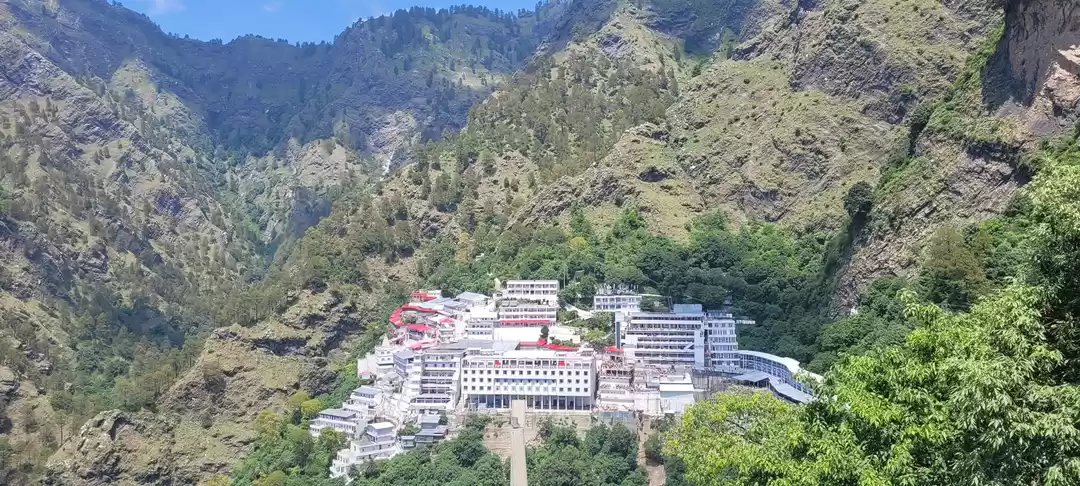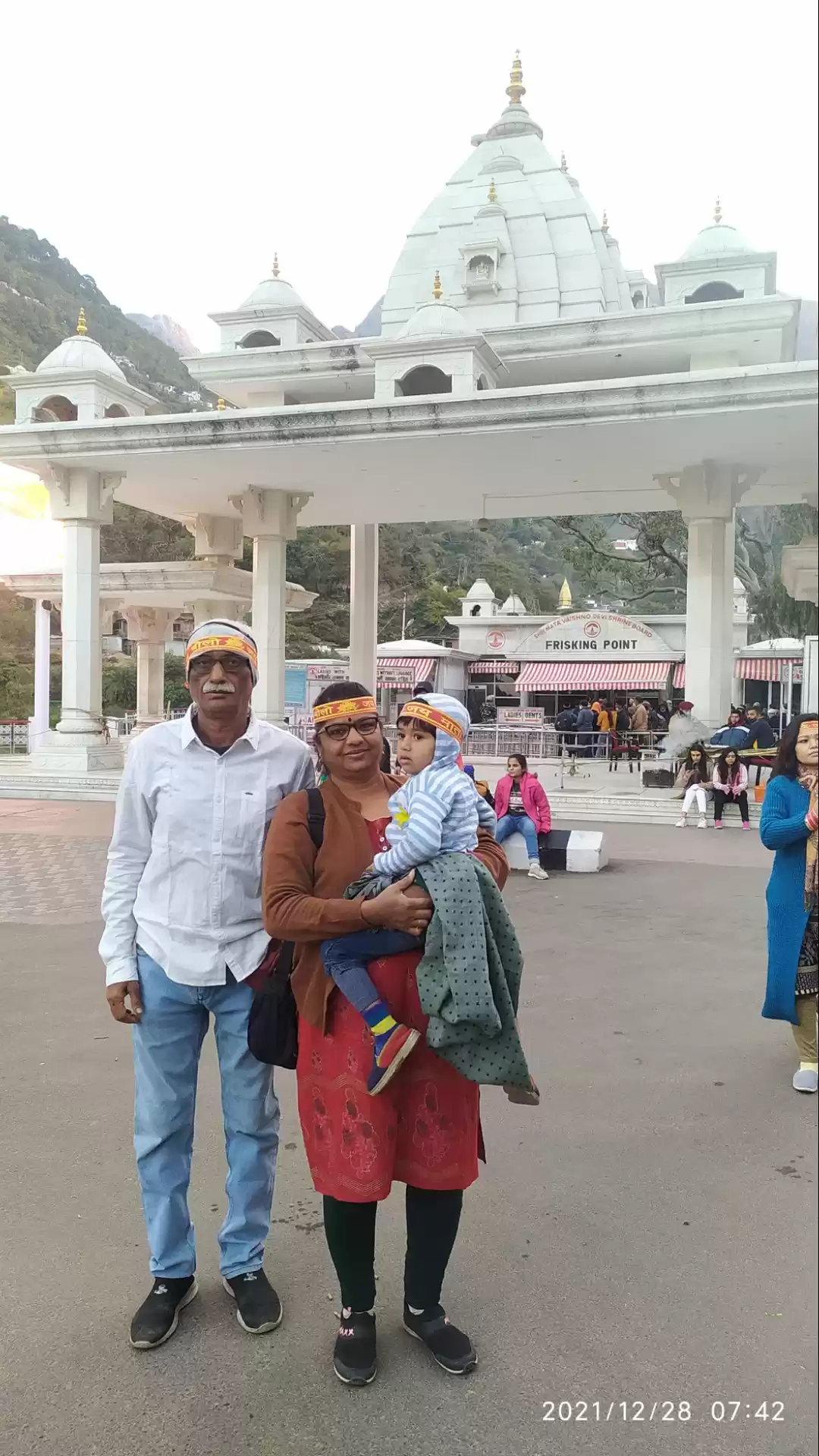
Vaishno Devi (also known as Mata Rani, Trikuta, Ambe and Vaishnavi) is a manifestation of the Hindu Mother Goddess, Devi. The words "Maa" and "Mata" are commonly used in India for mother, and thus are often heavily used in connection with Vaishno Devi. Vaishnavi was formed from the combined energies of Kali, Lakshmi, and Saraswati.
: LEGENDS

According to the folktales, during the Treta Yuga (second yuga of Hindu cosmology), evil forces started to threaten the earth. To save herself, Bhumi the Earth Goddess, went to the Trimurti for help. While the three gods were helpless, their consorts — Saraswati, Lakshmi and Parvati (Kali) combined their forces and created a goddess named Vaishno Devi. After numerous battles, the goddess defeated evils and was ordered to stay on earth to protect it. Years after, Vaishno Devi was reborn as the daughter of a Brahmin couple. From childhood, the goddess was attracted to Vishnu and decided to marry him. When she grew up, she started to meditate in order to please Vishnu. One day, Vishnu, in the form of Rama, came to her. Rama refused to marry her and told that he is searching for his lost wife — Sita. Seeing his devotee in misery, Rama promised her that he will return one day and if she recognise him, then he will marry her. Years later, Rama as an old man came there, but she couldn't recognise him. As a result, Rama again promised her that he will marry her as Kalki
: HISTORY

The temple, at a height of 1,584.96 m (5,200 ft), 12 km from Katra on Trikuta hill. It is about 61 km from Jammu city. There is no historical record about the temple, but there is a mention of the Trikuta hill in Rigveda, the place where the temple is located. The Mahabharata, which gives the account of the Pandavas and the Kurukshetra War, does mention the worship of goddess Vaishno Devi. Before the Kurukshetra War Arjuna is said to have worshipped Devi by the advice of Lord Krishna for the blessings. Pleased by his devotion, Mother Goddess appeared in front of him in the form of Vaishno Devi. When goddess appeared, Arjuna started praising her with a stotra, in which a Shloka goes by saying ‘ Jambookatak Chityaishu Nityam Sannihitalaye ’, which means ‘you who always dwell in the temple on the slope of the mountain in Jambhu’ — probably referring to the present day Jammu. Former Governor of Jammu and Kashmir Jagmohan says, "the Mata Vaishno Devi shrine is an ancient one whose antiquity is pre-Mahabharathan, Lord Krishna is believed to have advised Arjuna to go up in the hills of 'Jambhu' and seek the blessings of Vaishno Devi before taking up arms in the battlefield. 'Jambhu' is identified with present-day Jammu. Arjuna while worshipping Vaishno Devi, calls Her, the highest Yogin who is free from decrepitude and decay, who is the Mother of the Vedas and the Science of Vedanta and who is giver of Victory and personification of victory itself". It is also generally believed that the Pandavas were the first to build the temples at Kol Kandoli and Bhawan in reverence and gratitude for the Mother Goddess. On a mountain, just adjacent to the Trikuta Mountain and overlooking the Holy Cave are five stone structures, which are believed to be the rock symbols of the five Pandavas
The temple, at a height of 1,584.96 m (5,200 ft), 12 km from Katra on Trikuta hill. It is about 61 km from Jammu city. There is no historical record about the temple, but there is a mention of the Trikuta hill in Rigveda, the place where the temple is located. The Mahabharata, which gives the account of the Pandavas and the Kurukshetra War, does mention the worship of goddess Vaishno Devi. Before the Kurukshetra War Arjuna is said to have worshipped Devi by the advice of Lord Krishna for the blessings. Pleased by his devotion, Mother Goddess appeared in front of him in the form of Vaishno Devi. When goddess appeared, Arjuna started praising her with a stotra, in which a Shloka goes by saying ‘ Jambookatak Chityaishu Nityam Sannihitalaye ’, which means ‘you who always dwell in the temple on the slope of the mountain in Jambhu’ — probably referring to the present day Jammu. Former Governor of Jammu and Kashmir Jagmohan says, "the Mata Vaishno Devi shrine is an ancient one whose antiquity is pre-Mahabharathan, Lord Krishna is believed to have advised Arjuna to go up in the hills of 'Jambhu' and seek the blessings of Vaishno Devi before taking up arms in the battlefield. 'Jambhu' is identified with present-day Jammu. Arjuna while worshipping Vaishno Devi, calls Her, the highest Yogin who is free from decrepitude and decay, who is the Mother of the Vedas and the Science of Vedanta and who is giver of Victory and personification of victory itself". It is also generally believed that the Pandavas were the first to build the temples at Kol Kandoli and Bhawan in reverence and gratitude for the Mother Goddess. On a mountain, just adjacent to the Trikuta Mountain and overlooking the Holy Cave are five stone structures, which are believed to be the rock symbols of the five Pandavas





























